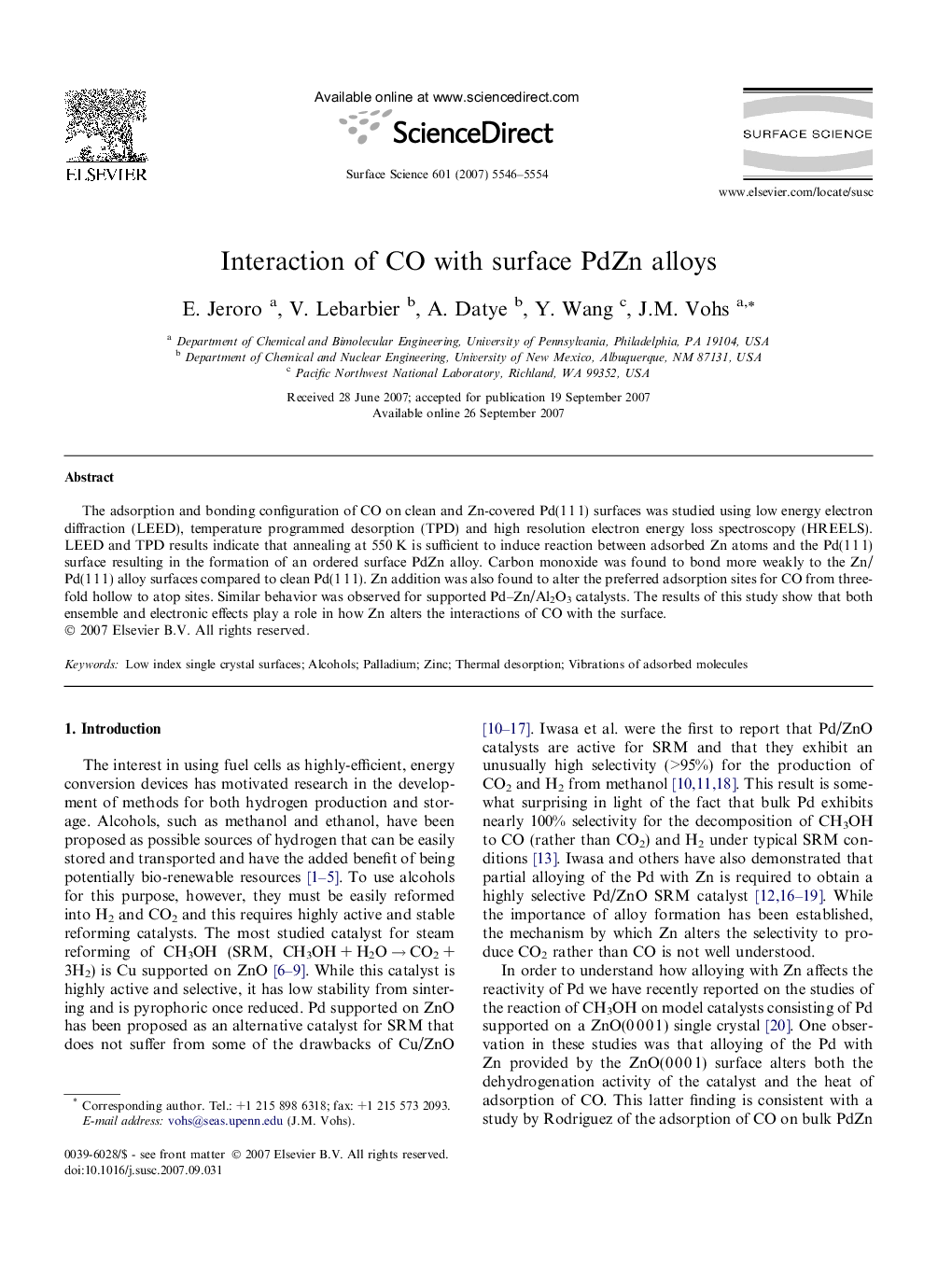| Article ID | Journal | Published Year | Pages | File Type |
|---|---|---|---|---|
| 5426323 | Surface Science | 2007 | 9 Pages |
The adsorption and bonding configuration of CO on clean and Zn-covered Pd(1Â 1Â 1) surfaces was studied using low energy electron diffraction (LEED), temperature programmed desorption (TPD) and high resolution electron energy loss spectroscopy (HREELS). LEED and TPD results indicate that annealing at 550Â K is sufficient to induce reaction between adsorbed Zn atoms and the Pd(1Â 1Â 1) surface resulting in the formation of an ordered surface PdZn alloy. Carbon monoxide was found to bond more weakly to the Zn/Pd(1Â 1Â 1) alloy surfaces compared to clean Pd(1Â 1Â 1). Zn addition was also found to alter the preferred adsorption sites for CO from threefold hollow to atop sites. Similar behavior was observed for supported Pd-Zn/Al2O3 catalysts. The results of this study show that both ensemble and electronic effects play a role in how Zn alters the interactions of CO with the surface.
